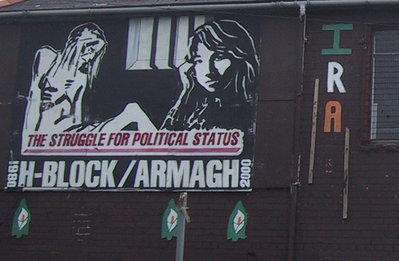AT LAST, THE "IF" HAS BECOME the "when" and "7/7" has moved into the lexicon of everyday conversation.
A hundred pounds worth of explosives has shown that the 350 million [pounds sterling] pound investment and the altered mind set of the UK Fire and Rescue Service have paid dividends in the response to the London attacks.
The London Fire Brigade emergency phase operations have been justly praised as effective and both individually and collectively, firefighters demonstrated that even in these politically challenging times, their eye remained firmly on the ball At an extended level, gold controls were set up in the Home Counties to provide additional resilience and support for the metropolis, had it become necessary.
Fortunately, due to a number of factors the emergency phase of the incidents were successfully dealt with in a short time. The first key point is that the incidents were compressed both geographically and, perhaps more importantly, in time.
The initial reports from London Underground were that there had been an explosion, caused by an electrical problem. It was only 20 minutes later that it was confirmed that bombs and not electricity that caused them. If the bombs had exploded in different cities or regions, how long would it have taken before "joined up thinking" took place and an alert put out to other areas?
Secondly, the incident types themselves were relatively straightforward and static. Although each was a major incident in itself, it was largely a matter of logistics and coordination, dealt with efficiently while adhering to the doctrine of flexibility in response. Had any of the incidents had a dynamic element, such as an escalating fire situation, then the complexity would have multiplied exponentially.
Furthermore, although some firefighters considered secondary devices, (and ignored the potential risk to save saveable lives) there is no evidence that the suicide bombers intended to target the police or other emergency services. This enabled the response to the locations to progress unimpeded.
In these respects, the attacks replicated one of the most favoured scenarios for an attack on a city in the UK--conventional weapons targeted at soft economic rather than political objectives (apart from London itself being a political target). It was also a methodology employed by the Provisional Irish Republican Army (IRA) in its attacks in London in the 1990s, particularly the Baltic Exchange (1992) and Bishopsgate (1993) bombings, which realised an economic impact greater than that of the previous 22 years of the PIRA campaign. Familiarity with the past and effective anticipation meant that the attacks, when they came, produced shock but not the paralysing disbelief experienced at some terrorist attacks in the past.
Finally, the "extras" that give emergency planners cold sweats at night--the chemicals, the biohazards and the radiological materials--were absent.
So how will history review the London attacks--the main event perhaps? Or merely the overture of a long campaign? If as predicted and demonstrated by the July 21 attacks, the attacks continue, how will the UK Fire and Rescue Services cope with escalating threat levels?
The most experienced Fire and Rescue Service in the country, if not the world, in terrorist threat response has been that of Northern Ireland. During the 26 year IRA campaign the service developed from lessons learned and evolved tactics which protected staff and public without overly compromising the service they provided to the community. Cognisant of the terrorist threat, an appropriately cautious approach to fires and other events, including at times adopting a standoff policy which could have increase the level of damage but limited exposure of staff to unreasonable risk.
If, terrorist attacks increase in frequency, changing the mind set to a point where committal of resources to an incident is withheld in the early stages will be a standard operating procedure vital to safeguard firefighters safety. Although alien to most firefighters, this is a doctrine now used by most frontline fire services in the trouble spots of the world including Israel and Iraq.
The resources available to deal with attacks nationally should be adequate. The attacks in London currently represent somewhere near the upper threshold of coordinated attacks in developed countries in the west and the USA. Short of dozens of attacks simultaneously, the capacity of the UK Fire and Rescue Services to deal adequately with the London modus operandi, even if geographically dispersed, is not in doubt. Where the order of magnitude of the event is greater than any of the London bombs, the scalability of response will ensure that eventually, an adequate operational response will be forthcoming, anywhere in the UK, even without the strategic coordination that may eventually be provided by the regional control centres.
The great unknown in the current climate is the ability to predict non-conventional attack scenarios and their consequential impact. Despite extensive exercises across all regions, some of the problems associated with a multi service, multi organisational regional response, seemed insurmountable. The attacks on London, however, have shown that flexibility and commitment will overcome many of the concerns but some problems remain.
The conventional attacks on the capital may be the summit of terrorist capability at the moment. The potential for chemical biological and radiation devices may seem remote now but given the arguments about terrorists conventional capability, there are areas that need to be explored if the threats escalate or evolve.
Biological attacks, such as those involving anthrax, will require a limited resource from fire and rescue services and generally only for a limited period as the prognosis for the event is well known and predictable. Attacks in the USA have followed a pattern and the protocols for dealing with spillages and other hazmats are embedded in the UK. Fortunately, the technological requirements for biological materials are complex and require facilities, which make it unlikely that it will be the terrorists' first weapon of choice.
The opposite is true for the availability of chemical and radiological sources that could be used to make an improvised "weapon of mass destruction". As shown on recent TV documentaries tankers of toxic/flammable/explosive gases and liquids are readily available and would appear to be the most credible and available threats after more conventional weaponry.
Unlike the London attacks, firefighters responding to a chemical attack would be faced with a rapidly evolving and dynamic situation where the responders would not only have to deal with the immediate threat, but also make predictive judgements to guide actions at a strategic level This would create the moral dilemmas, frequently used by interviewers but rarely faced on the fireground, where the sterile consideration of doing the greatest good for the greatest numbers goes head to head with reality.
The ability for any service to respond adequately to this scenario is limited, irrespective of the part of the country of or type of service. The Long set up time for many elements of a New Dimensions response will mean that greater reliance will be placed upon first responders to improvise tactics and techniques to do the greatest good in those first hours. In a "no win" situation, watch and station managers will be setting out the foundations for minimising casualties of an unprecedented incident in the UK.
Dirty bombs
The event that has been portrayed as the "big scary one" in the media is the "dirty bomb". In Goiania, Brazil in 1987, a teletherapy unit containing 23 grams of caesium-137 source was stolen for scrap metal. The thieves ruptured the container and spread contamination across the city. Four died and 28 suffered radiation burns. Seven buildings were demolished and the decontamination of the environment took six months and generated some 3,500 [m.sup.3] of radioactive waste. Over 240 people were severely contaminated, 112,000 were monitored and environmental monitoring was carried out over 67 [km.sup.2] of the city. Redundant and active medical sources of suitable material are not as rare as would be expected. Fine particles of radioactive materials dispersed by mechanical means or by an explosion could cause mass panic and widespread disruption but, like the biological hazard, the impact upon fire and rescue services is not overwhelming as involvement is likely to be confined to the emergency phase immediately following an explosion.
In the USA, many fire departments routinely treat all explosions as potential "dirty bombs" until confirmed otherwise. Equipment for this level of operational response in the UK is not yet fully available but it was can only be assumed that the potential for this type of attack was given early consideration at the London attacks.
The soon-to-be-activated October 1,2005--Government Decontamination Service (GDS) will be responsible for the aspects of the recovery phase operations of CBRN events and may remove many of the resource implications for fire and rescue services. At least in theory: as experience shows the gap between the emergency response and the strategic resources necessary to begin to conclude events will be at least two hours and, for some elements, days.
Unlike any other aspects of activity, terrorism is an event that fire and rescue services are only bystanders, unable to influence, limited to picking up the pieces of an attack. Despite the number of potential attacks prevented by the security services, terrorists, willing to sacrifice themselves always have potential to get through the net. The randomness of the death and destruction is something that we may have to get used to in the UK. One thing that can be relied on is that the next attack in the UK will take a different shape to the last but the building blocks of the response are in place to cope.
Bridging the gap between tactical and the strategic mobilisation, however, will still be down to the first resources on the ground--mainly the first responders doing the greatest good for the greatest numbers.
COPYRIGHT 2005 DMG World Media Ltd.
COPYRIGHT 2005 Gale Group




